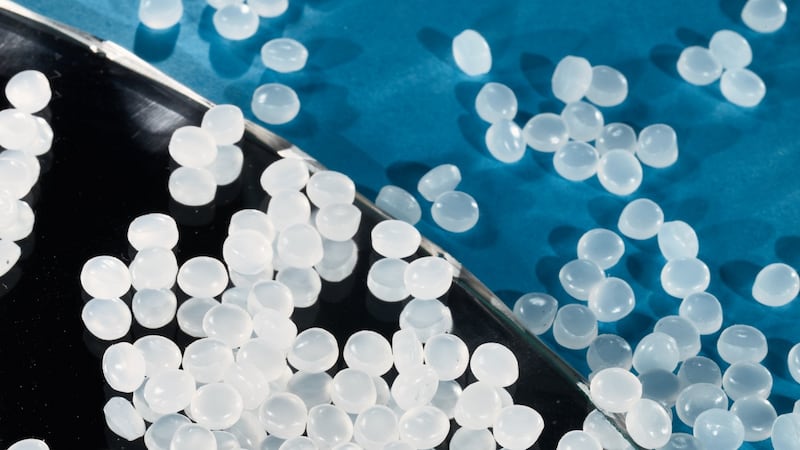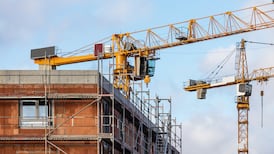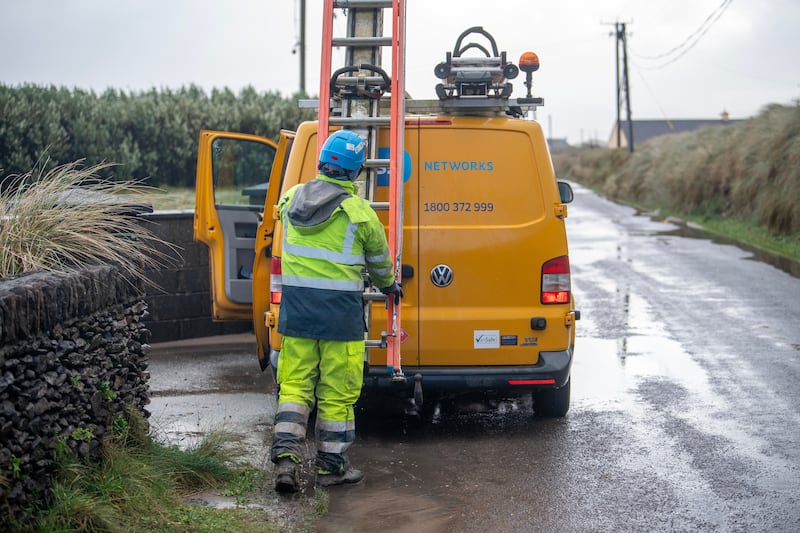The 386-acre property looks like a giant Lego set rising from the banks of the Ohio River. It is one of the largest active construction projects in the United States, employing more than 5,000 people.
When completed, the facility will be fed by pipelines stretching hundreds of miles across Appalachia. It will have its own rail system with 3,300 freight cars. And it will produce annually more than 1 million tons of something that many people argue the world needs less of: plastic.
As concern grows about plastic debris in the oceans and recycling continues to falter in the US, the production of new plastic is booming. The plant that Royal Dutch Shell is building about 25 miles northwest of Pittsburgh will create tiny pellets that can be turned into items like phone cases, auto parts and food packaging, all of which will be around long after they have served their purpose.
The plant is one of more than a dozen that are being built or have been proposed around the world by petrochemical companies like Exxon Mobil and Dow, including several in nearby Ohio and West Virginia and on the Gulf Coast. And after decades of American industrial jobs heading overseas, the rise of the petrochemical sector is creating excitement. On Tuesday, President Donald Trump is scheduled to tour the Shell plant.
Plastic popularity
"Where we are coming from is that plastic, in most of its forms, is good and it serves to be good for humanity," said Hilary Mercer, who is overseeing the construction project for Shell. The boom is driven partly by plastic's popularity as a versatile and inexpensive material that keeps potato chips fresh and makes cars lighter. But in parts of the Appalachian region, the increase is also being fuelled by an overabundance of natural gas.
It has been about 15 years since hydraulic fracturing, or fracking, took hold in Pennsylvania, which sits atop the huge gas reserve of the Marcellus Shale. But natural gas prices have collapsed and profit must be found elsewhere, namely the natural gas byproduct ethane, which is unleashed during fracking and can be made into polyethylene, a common form of plastic.

This is a place where, right now, plastic makes sense to many people. To the labour union gaining new members. To the world’s third-largest company struggling with low oil prices. And to the former government officials who, in seeking to create jobs, offered Shell one of the largest tax breaks in state history.
Short-term gains
But any short-term good could have long-term costs. Shell says much of the plastic from the plant can be used to create fuel-efficient cars and medical devices. But the industry acknowledges that some of the world’s waste management systems are unable to keep up with other forms of plastic like water bottles, grocery bags and food containers being discarded by consumers on the move.
Studies have detected plastic fibres everywhere - in the stomachs of sperm whales, in tap water and in table salt. A researcher in Britain says plastic may help define the most recent layer of the earth’s crust because it takes so long to break down and there is so much of it.
"Plastic really doesn't go away," said Roland Geyer, a professor of industrial ecology at the University of California, Santa Barbara. "It just accumulates and ends up in the wrong places. And we just don't know the long-term implications of having all this plastic everywhere in the natural environment. It is like this giant global experiment and we can't just pull the plug if it goes wrong."
’Part of a Journey’
The roots of Shell's sleek, ultramodern plant date back hundreds of millions of years, when the area was occupied by a wide inland sea. Over time, the earth shifted and the sea was covered by rock, which compressed the dead organisms and sediment that had settled on its watery bottom into rich layers of hydrocarbons, including those that make up natural gas. Mercer has spent 32 years travelling the world for Shell - in southern Iraq and in eastern Russia - helping turn those hydrocarbons deep within the Earth into energy. These days, Mercer, an English-born, Oxford-educated engineer, works out of a red brick building in Beaver, Pennsylvania.
The plant Mercer has come here to build is “as big as you get,” she said. When finished, Shell’s cracker plant - named for the chemical reaction of “cracking” gas molecules into the building blocks of plastic - will consume vast quantities of ethane pumped from wells across Pennsylvania into an enormous furnace. The superheated gas is then cooled, forming solid pellets about the size of grains of Arborio rice. The process takes about 20 hours.
In Mercer’s view, this is a positive development for the environment. Creating more plastic, she says, helps reduce carbon emissions by creating lighter and more efficient cars and aeroplanes. “You have plastic in wind turbines. You have plastic in solar panels.”
She added: “The ability to do those renewable things relies to some extent on the plastics we produce and the chemicals that we produce. I don’t see a contradiction. I see it as part of a journey.”
Shell is involved in a broad industry effort to clean up the world's largest sources of plastic waste. And in Beaver County, Shell recently donated money to extend the hours of the local recycling centre and it supports other initiatives that the company believes will contribute to a "circular economy."
But a circular economy has not yet taken hold in Beaver. Like many areas around the country, the county has had to limit the type of plastic packaging it can accept for recycling because relatively few buyers want to repurpose it. “We are looking for long-term solutions right now,” a spokeswoman for the recycling centre said.
’Where You Want to Be’
It was a golden autumn afternoon in Pittsburgh, sunny and mild. The Steelers American football team were in town playing at Heinz Field and Gov. Tom Corbett got two box-seat tickets to the game. The governor's guest at the game in October 2012 was a Shell executive, who was helping to decide where the company would locate its giant cracker plant. Corbett took the executive down to the field to meet some of the players. Then the governor walked him out to midfield to stand on the Steelers' yellow and black logo.
"I told him, 'This is where you want to be,'" Corbett recalled. Shell agreed, and was offered a tax break that was projected to save the company an estimated $1.6 billion. Corbett, a Republican, said the plastics plant would bolster communities in an area devastated by the collapse of the steel industry in the 1980s, when the unemployment rate hit 28 per cent. "Did you know there is a Steelers bar in Rome?" Corbett asked in a phone interview. "The reason the Steelers travel so well is because when steel died many people moved away." Corbett said he believed the Shell plant was only the beginning of the state's plastics boom. He envisions manufacturers coming to Beaver County to be closer to the source of the raw plastic. His successor, Tom Wolf, a Democrat, has been courting more petrochemical development.
“We are rebuilding the economy,” said Corbett, who left office in 2015 after one term.
The cracker plant itself is allowed by the state to emit 2.2 million tons of carbon dioxide each year, which is the equivalent of about 480,000 cars. Shell says the plant is likely to emit less than that. “Will you eventually see everything renewable? Probably in 100 years,” Corbett said. “But right now natural gas is giving a future to your grandchildren.”
’What Is Life Going to Be Like’
Around Beaver County, the cracker plant is creating opportunities for some and deep concerns for others. At the local union hall of the International Brotherhood of Electrical Workers, Larry Nelson oversees about 380 electricians working on the plant, including many who have relocated from 28 states. After decades of decline, union membership is growing again.

"The guys are tickled pink to be working on this thing," Nelson said. But there will be only about 600 permanent jobs at the plant, about 12 per cent of the construction workers at the site now. A company spokesman said the plant was expected to open "in the early 2020s." Some residents say their worries about the cracker plant and fracking over the long term are already coming to bear. The effect of climate change, for example, can be seen around Beaver County, and at the plastics plant in particular. This spring, the huge furnace that will heat the ethane was being shipped on the Mississippi River, but had difficulty fitting under some bridges because the water was so high from flooding. At the construction site, Shell has installed giant tarps to keep the workers dry in the frequent rain, which hit a record last year in Pittsburgh.
Some residents see other signs of trouble.
Amanda Miller never paid much attention to the cracker plant rising 16 miles from her home in Franklin Park, an affluent suburb of Pittsburgh. What made her speak out at a municipal meeting in January was a proposal by a fracking company to drill under a local park with hiking trails and playing fields.
"That was going too far," said Miller, an occupational therapist at a children's hospital in Pittsburgh. The company's proposal was rebuffed. But it has leases on private land in the area that is rich in ethane. The morning after the meeting, Miller woke up early to feed her 14-month-old daughter. Her other three children were still asleep. They had just celebrated her husband's grandmother's 99th birthday. In that quiet moment, alone with her daughter, Miller thought of the plastics plant and the fracking that was increasing around her. "That's when it hit me," she said. "I looked at her and wondered what is life going to be like when she is 99. And for the first time I wasn't hopeful. I actually started to cry."
– The New York Times News Service



















